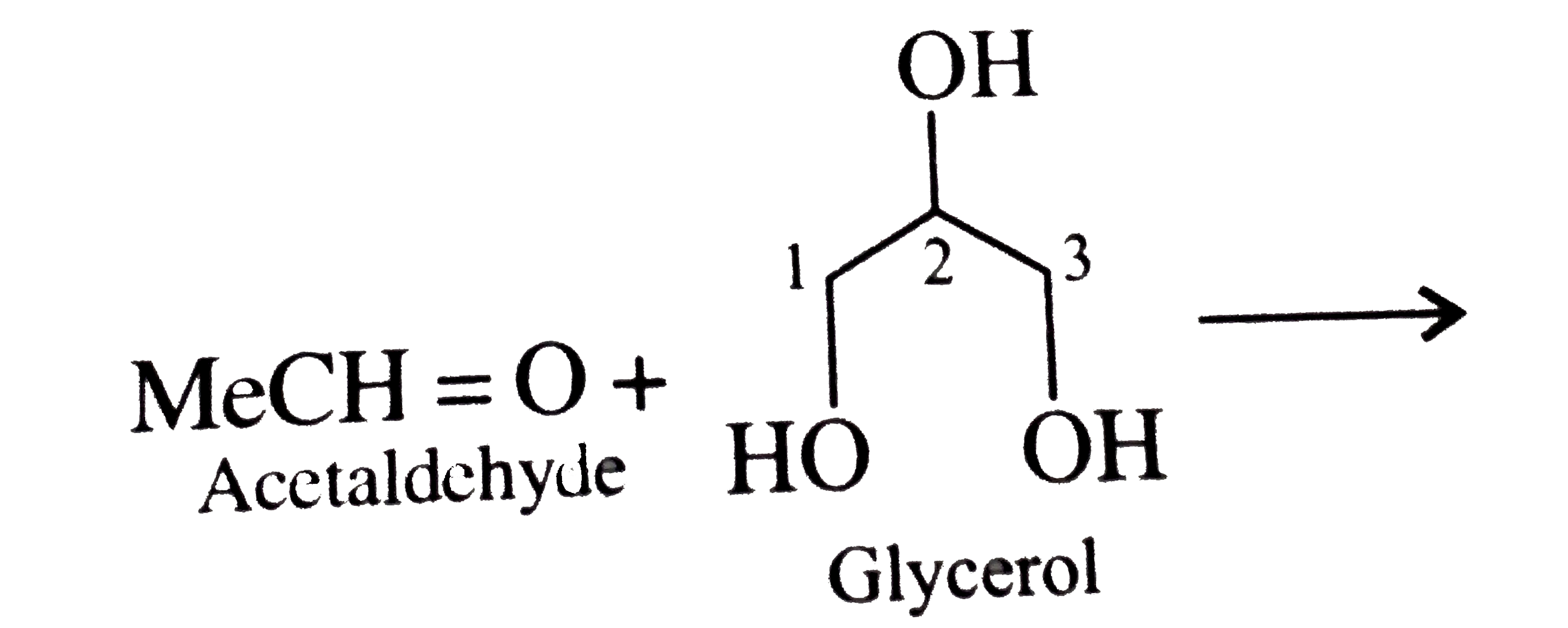Write the structures of possible isomers of dichlorobenzene.
To find the possible isomers of dichlorobenzene, we need to consider the positions where the chlorine (Cl) atoms can be attached to the benzene ring. The molecular formula for dichlorobenzene is C6H4Cl2, indicating that there are two chlorine atoms attached to a benzene ring.
1. Identify the Base Structure:
- The base structure is the benzene ring (C6H6). When we add two chlorine atoms, we get C6H4Cl2.
2. Determine Possible Positions for Chlorine Atoms:
- Chlorine atoms can be attached to the benzene ring in different positions. The positions can be classified as ortho (adjacent), meta (one carbon apart), and para (opposite).
3. Draw the Isomers:
- Ortho-Dichlorobenzene (1,2-Dichlorobenzene):
- The two chlorine atoms are attached to adjacent carbon atoms on the benzene ring.
- Structure:
Cl|C6H4−C|Cl
- Meta-Dichlorobenzene (1,3-Dichlorobenzene):
- The two chlorine atoms are attached to carbon atoms that are separated by one carbon atom.
- Structure:
Cl|C6H4−C−C|Cl
- Para-Dichlorobenzene (1,4-Dichlorobenzene):
- The two chlorine atoms are attached to carbon atoms that are opposite each other on the benzene ring.
- Structure:
Cl|C6H4−C|Cl
4. Summarize the Isomers:
- The three possible isomers of dichlorobenzene are:
1. Ortho-Dichlorobenzene (1,2-Dichlorobenzene)
2. Meta-Dichlorobenzene (1,3-Dichlorobenzene)
3. Para-Dichlorobenzene (1,4-Dichlorobenzene)
Final Structures:
1. 1,2-Dichlorobenzene (Ortho)
2. 1,3-Dichlorobenzene (Meta)
3. 1,4-Dichlorobenzene (Para)
- The base structure is the benzene ring (C6H6). When we add two chlorine atoms, we get C6H4Cl2.
- Chlorine atoms can be attached to the benzene ring in different positions. The positions can be classified as ortho (adjacent), meta (one carbon apart), and para (opposite).
- Ortho-Dichlorobenzene (1,2-Dichlorobenzene):
- The two chlorine atoms are attached to adjacent carbon atoms on the benzene ring.
- Structure:
Cl|C6H4−C|Cl
- Meta-Dichlorobenzene (1,3-Dichlorobenzene):
- The two chlorine atoms are attached to carbon atoms that are separated by one carbon atom.
- Structure:
Cl|C6H4−C−C|Cl
- Para-Dichlorobenzene (1,4-Dichlorobenzene):
- The two chlorine atoms are attached to carbon atoms that are opposite each other on the benzene ring.
- Structure:
Cl|C6H4−C|Cl
- The three possible isomers of dichlorobenzene are:
1. Ortho-Dichlorobenzene (1,2-Dichlorobenzene)
2. Meta-Dichlorobenzene (1,3-Dichlorobenzene)
3. Para-Dichlorobenzene (1,4-Dichlorobenzene)
1. 1,2-Dichlorobenzene (Ortho)
2. 1,3-Dichlorobenzene (Meta)
3. 1,4-Dichlorobenzene (Para)
Topper's Solved these Questions
- HYDROCARBONS BOOK - ICSECHAPTER - HYDROCARBONS EXERCISE - ESSAY (LONG ANSWER) TYPE QUESTIONS
28 Videos
- HYDROCARBONS BOOK - ICSECHAPTER - HYDROCARBONS EXERCISE - OBJECTIVE (MULTIPLE CHOICE) TYPE QUESTIONS
71 Videos
- HYDROCARBONS BOOK - ICSECHAPTER - HYDROCARBONS EXERCISE - VERY SHORT ANSWER TYEP QUESTIONS
47 Videos
- EQUILIBRIUM BOOK - ICSECHAPTER - EQUILIBRIUM EXERCISE - NCERT TEXT-BOOK EXERCISE
109 Videos
- HYDROGENBOOK - ICSECHAPTER - HYDROGENEXERCISE - NCERT TEXT-BOOK EXERCISE (With Hints and Solutions)
53 Videos
Similar Questions
Knowledge Check
The number of possible isomers of dichloronitrobenzene is :
A3B4C6D8
Write the structural formulae of all isomers of hexane.
View SolutionDraw the structures of isomers of pentane.
View SolutionWrite the structure of various isomers formed in the reaction given below.

Gives two seperable isomers.
View SolutionA compound is formed by the substitution of two chlorine atoms for two hydrogen atoms in propane. Write the structures of the isomers possible.
Give the IUPAC name of the isomer which can exhibit enantiomerism.
View SolutionWrite the structures of cis- and trans-isomers of but-2-enoic acid.
View SolutionWrite the structures of cis- and trans-isomers of but-2-enoic acid.
View SolutionWrite the structures of cis- and trans-isomers of but-2-enoic acid.
View Solution
